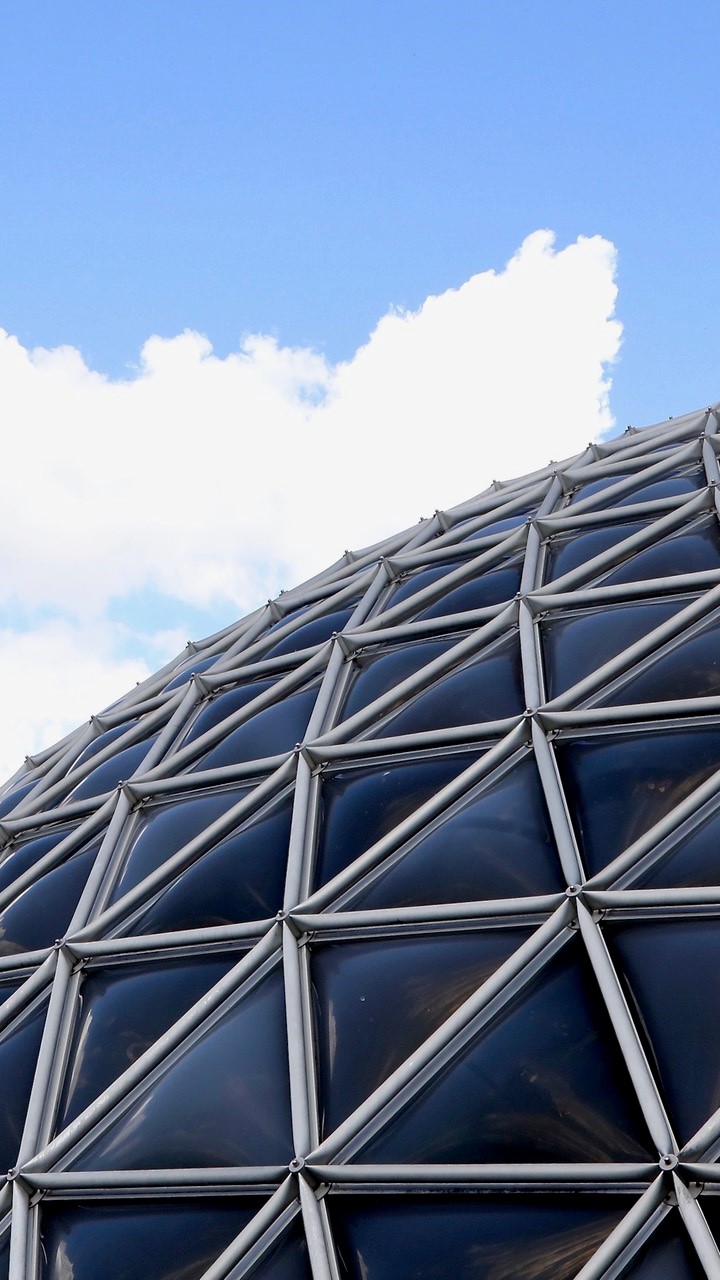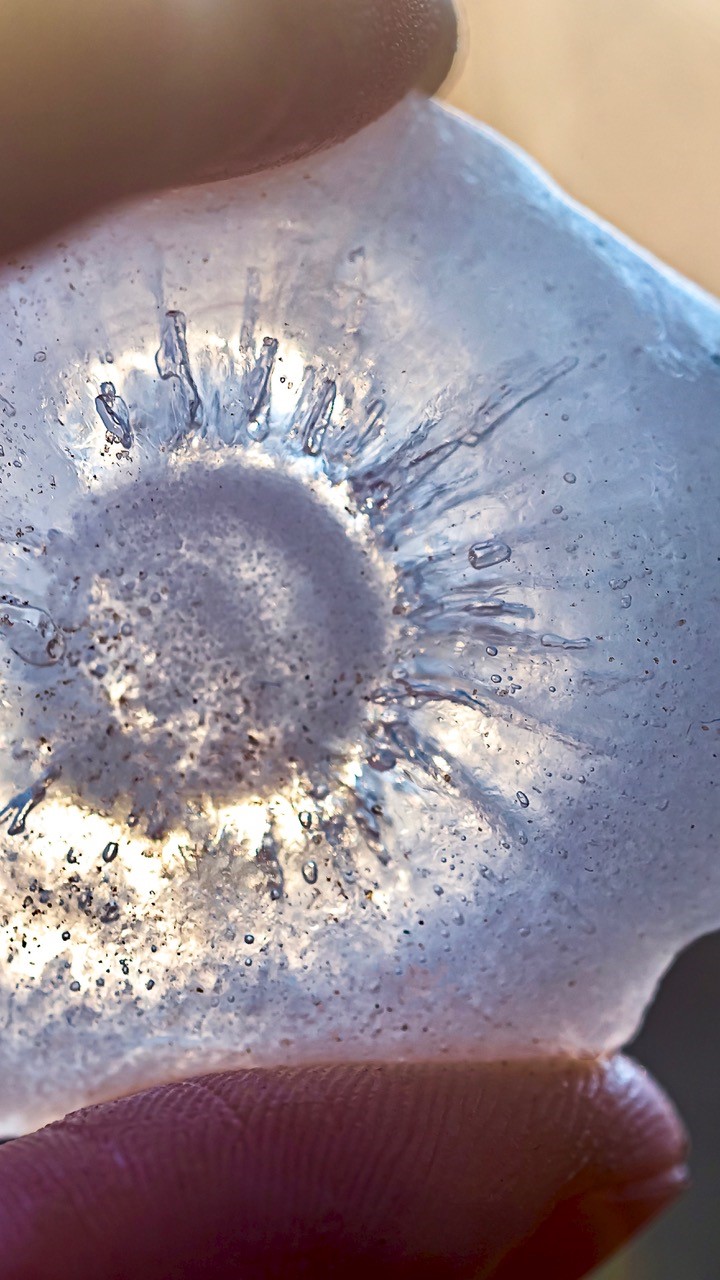When the climate crisis took hold, the effects on gardening were devastating. Thankfully, technological innovation is allowing us to get growing again.
‘Just imagine what this kind of weather did to greenhouses in the late 2020s,’ shouted Cally over the thunderous din. Unlike the group she was guiding, she didn’t flinch as 3in-wide hellstones – or hailstones, as gardeners used to call them – hammered on the roof of the domed greenhouse. ‘Don’t worry, we’re safe in here. The ammo from Hades isn’t getting through any time soon.’
The small group of young faces, cowering amongst beds brimful with towering tomatoes, cucumbers and skyward-heading beans, were unconvinced. ‘We’ve tested the new Ekoglass out with much bigger stones than this, honest.’ Cally winked, making a 4in-wide circle with her fingers. ‘You’ve picked a perfect day to visit – try touching it.’
Wary fingers pressed against the green-tinged ‘glass’.
‘Oh wow, it’s… soft,’ said one of the horticulture students. ‘It actually gives!’

‘It sure does,’ said Cally, throwing a punch. Her knuckles sank into the translucent skin. ‘That’s why it isn’t going to let in any oversized ice cubes. So relax! Do you see what’s happening when the stones actually hit?’ A flash of lightning illuminated the glassy lumps falling from an angry, unpredictable summer sky.
‘The hail’s actually… bouncing off?’
‘Spot on,’ said Cally, ‘and if you look closer, you can see that the glass is giving a little, each time a stone hits.’ Emboldened eyes moved to within inches of the hammering hellstones, studying the brief indentation formed by each one, before it joined the fast-deepening ring of ice gathering outside the greenhouse.
‘Being flexible, it can absorb the impact of the stones, which ricochet off, without causing damage,’ explained Cally. ‘If this were an old-style greenhouse glazed with even the toughest glass, we’d need paramedics by now. Come on, let’s just feel it.’ Brave fingertips explored the chilling translucent skin as hell rained down.

Amid the roar of falling ice, a stillness fell among the group as palms reached up, joining Cally’s in pressing against the full force of a turbulent, undependable world, handprints forming split-second silhouettes as silver forked across the furious sky. Mouths agape, eyes meeting in awestruck wonder, an unspoken truth crackled between them.
We poked our natural world with a selfish stick, again and again and again, and now it’s biting back.
Big time.
Cally rubbed her chilled fingers together as black gave way to blue, hell’s roar fading to a whimper, sunlight casting shadows across relieved, smiling faces. ‘It’s a monster today.’ She checked her tablet’s screen. ‘Big storm lines are forming, according to WeatherDar. Any glass and plastic glazing won’t stand a chance in this, and poor old polytunnels will be in shreds.’
Cally’s brightness briefly faltered, then came back. ‘That pounding did more than just test the Ekoglass. Each whack sent an electrical charge to the units that help keep the greenhouse cool during the heatwaves. And it gets even better. We’re effectively inside one big solar panel, powered by algae. It’s actually alive and…’
‘Look!’ Curious fingers traced over a patch of sun-warmed, darkening glass. ‘It’s turning…’
Cally smiled, ‘… and it creates its own shading, depending on how much sun there is. Darker green on sunnier days, and vice versa. The algae work with special cells in the glass to generate electricity, which is also stored in batteries to power the cooling units. We wouldn’t stand much chance in here during half a month at 30 or more celsius. We’d fry like the tomatoes.’
She checked her tablet. ‘It’s nearly 35°C again outside. We’re aiming for the low to mid-20s in here in summer, which is what gardeners in the early 2020s and the decades before grew in.’
‘You mean all these crops could be grown outside?’ asked a student, lifting a truss of ripening fruits. ‘Didn’t they have hail from hell back then?’ Sun glinted on the melting ring of giant ice balls.
‘They did, but…’ Cally’s tablet played a hologram in the middle of the group. ‘There was always hail, and sometimes it was bad and leaves and fruits would be ripped and torn, like this, but most plants, even if spoiled, recovered. But then, in 2021, things changed when a line of powerful thunderstorms formed across the UK, triggered by an intense heatwave breaking down, which caused…’
Eyes widened as they watched hellstones dent cars, smash holes in conservatory roofs, and leave greenhouses in smithereens. Hands proffered up hail the size of golf balls, as stunned homeowners waded along flooded streets. ‘They look like babies compared to ours,’ said Cally, pausing the hologram to hold a virtual glassy stone between her fingers.
‘That was the first time hellstorms had caused such widespread damage. But obviously’ – they looked up as a laggard lump of ice banged on the glass – ‘not the last. In fact…’ A line-up of holographic hellstones showed how they’d grown in size over the years.
A finger pointed to a four-incher. ‘When was that?’
‘That broke the 2036 recorded size,’ said Cally. ‘A lot of people were badly injured that year, and a couple died. It’s not just size that matters, it’s velocity. With more energy and moisture in our atmosphere, the stones get sucked higher into the storm clouds, and with further to fall, they gain incredible speed. Even now, it’s tough to predict exactly where they’ll hit.’
Cally’s fingers rapped against the soft, green glass. ‘And that’s where this amazing stuff comes in. We’re hoping it’ll get everyone, and especially community groups, gardening again.’ She passed out samples of Ekoglass.
‘It feels like jelly!’ said one student. ‘You can actually bend it,’ added another. A third said, ‘It’s so thin, almost like the polytunnel covers they’ve got on show in the museum,’ which gave Cally her cue.
‘Thin, bendy, flexible, hellstone-proof – and we’re working on making it even thinner. Now, how do you think these qualities can benefit the most gardeners – any ideas?’
The students murmured, studying the bendy glass. ‘By… retrofitting the greenhouses we still have?’ offered a hesitant voice. ‘Or by getting abandoned greenhouses up and running again?’ said another. ‘Wrap it like a new skin around them, and use it just like the old skins on polytunnels?’
Cally gave a thumbs-up. ‘Yes, yes and yes! Good thinking, everyone.’ The sun’s smile slid away behind grumbling grey clouds. ‘Anyone who wants to can upgrade or resurrect their greenhouse. Ekoglass will work best on bigger frames, but we’re developing mini cooling units for most sizes. It can be fitted to any structure that’s still sound. Let’s see…’ The hologram showed an abandoned greenhouse being transformed from an overgrown bindweed support to one packed with crops. ‘Even an average-size structure can withsta–’
Bang!
Startled, they watched a lone hellstone tumble down the outside of the dome. Then another, and another, lightning letting hell loose once more.
Text © John Walker Images: Depositphotos
Find John on Twitter @earthFgardener


